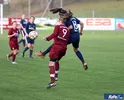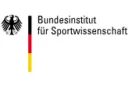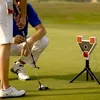Sports
Studies of expertise in sports using movement and gaze analysis as well as analyses of neural correlates. Main topics are prevention of behavioural and neural deficits following (sub-)concussions in contact sports and of dystonia in precision skills. Used methods encompass motion capture, eye tracking, video analyses and neuroimaging as well as modern wearables.
Impact of football headers on brain structure and function
Jan Kern, Joachim Hermsdörfer
Since July 2017 the Chair of Human Movement Science at TUM has been taking part in a collaborative research project funded by the Federal Institute of Sports Science (BISP). Our aim is to analyze the cumulative effects of headers in female soccer players during two football seasons including practice sessions and games. Using wearable head-accelerometers and video analyses we plan to register and evaluate whether headers may induce changes in cognitive, sensorimotor, neuropsychological and vestibular functions and how this is related to quantity and intensity. Furthermore, by means of magnetic resonance imaging (MRI) we will examine the presence of structural and functional brain changes associated with the headers. The first phase of the study was completed in November when we performed different MRI-sequences together with an assessment protocol including neuropsychological, sensorimotor, and balance tests. After a period of two years a second phase of assessments will be conducted following the same procedure as in the first phase. Currently, we are matching the impact data collected by the sensors with the videos from practice sessions and first games of the season.
Funding: Bundesinstitut für Sportwissenschaft https://www.bisp-sht.de/SHT/DE/Home/home_node.html


